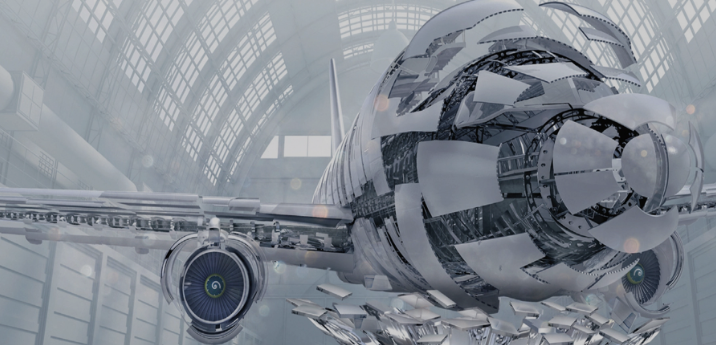

Aluminium boasts a rich and triumphant legacy within the aerospace sector. The Wright brothers, pioneers of aviation, made a groundbreaking decision in 1903 by selecting aluminium as the primary material for crafting the cylinder block and other engine components for their inaugural human-crewed flight.

Throughout the ensuing decades, aluminium has maintained a pivotal presence in the aerospace industry, experiencing a steady upsurge in demand. Aerospace engineering employs an array of aluminium alloys, with certain alloys favoured more than others.
Aluminium's role in the transportation sector, particularly aerospace, extends beyond its lightweight nature. This versatile metal is a critical component in modern aircraft and spacecraft due to its exceptional strength-to-weight ratio, corrosion resistance, and ease of fabrication. These qualities make it ideal for constructing aircraft frames, wings, and other structural elements, enabling fuel efficiency and high-performance aviation. Get a deeper understanding by exploring AL Circle's industry-focused report, "Future of Aluminium in Transportation Sector - a market analysis and forecast to 2027".
Below are the commonly used aluminium alloys and their applications:
Aluminium alloy 2024: It is extensively utilized in the field of aerospace advancement. This alloy's remarkable combination of high yield strength and superior fatigue resistance makes it a top-tier choice. In the aerospace industry, it is frequently employed in the form of sheets for constructing wings and fuselages.
Aluminium alloy 2014: It ranks the industry's second most utilized aluminium alloy. Its reputation rests on its impressive combination of strength and toughness, although it exhibits corrosion susceptibility. Consequently, it is frequently employed in structural components rather than exterior shell applications. Another factor contributing to its popularity is its compatibility with arc welding techniques.
Aluminium alloy 5052: It is aluminium–magnesium alloy, primarily alloyed with magnesium and chromium. It falls into the category of non-heat-treatable alloys but can be hardened through cold working. It boasts exceptional strength and remarkable ductility, allowing it to be easily shaped into various forms. Furthermore, its exceptional resistance to corrosion makes it a valuable choice for a wide range of aerospace applications.
Aluminium alloy 6061: It is a popular choice for lightweight aircraft due to its excellent machinability and welding capabilities. Its commendable strength makes it a prominent material in constructing aeroplane wings and fuselages.
Aluminium alloy 7050: It is a popular choice in the aerospace industry, particularly for wing skins and fuselage components in military aircraft, thanks to its exceptional corrosion resistance and impressive strength across a range of dimensions. Its remarkable resistance to fractures sets it apart from other alloys, making it highly esteemed in the aerospace sector.
Aluminium alloy 7068: This alloy ranks among the most robust materials available, boasting a lightweight composition. It's ideal for applications demanding resilience in harsh environments and finds extensive use in military aircraft.
Aluminium alloy 7075: Its strength is akin to steel, owing to its elevated zinc content. Its exceptional fatigue resistance and ease of machining made it a preferred material for aircraft during World War II, and continued prominently used in various military applications.
Conclusion
The versatility and durability of aluminium alloys have solidified their pivotal role in the aerospace sector. As the industry continues to push the boundaries of innovation, this remarkable and sustainable material will remain the backbone of aircraft design, ensuring that the sky is not the limit but merely the beginning of the aerospace journey. Whether soaring through the stratosphere or exploring the cosmos, aluminium alloys will be there, steadfast and unwavering, helping the industry to reach new heights and unveil the secrets of the universe.
Source: thyssenkrupp
Responses








